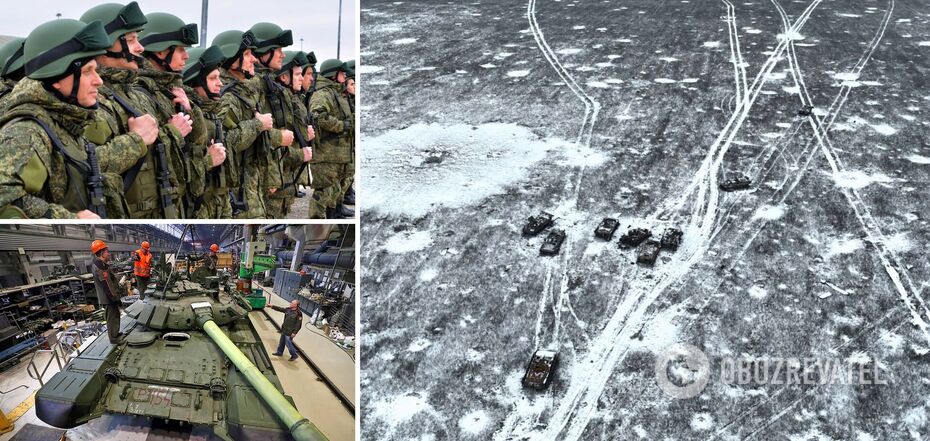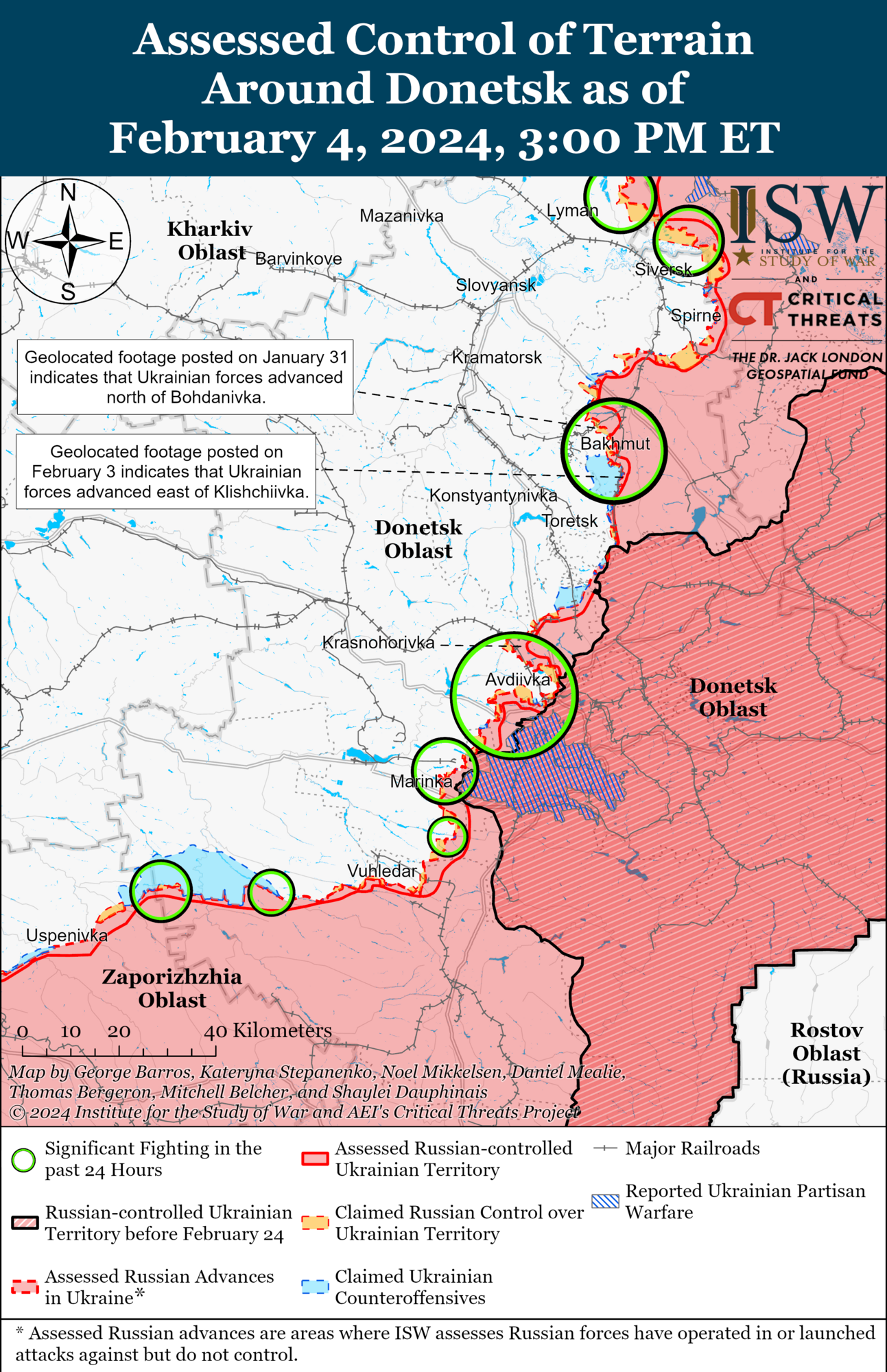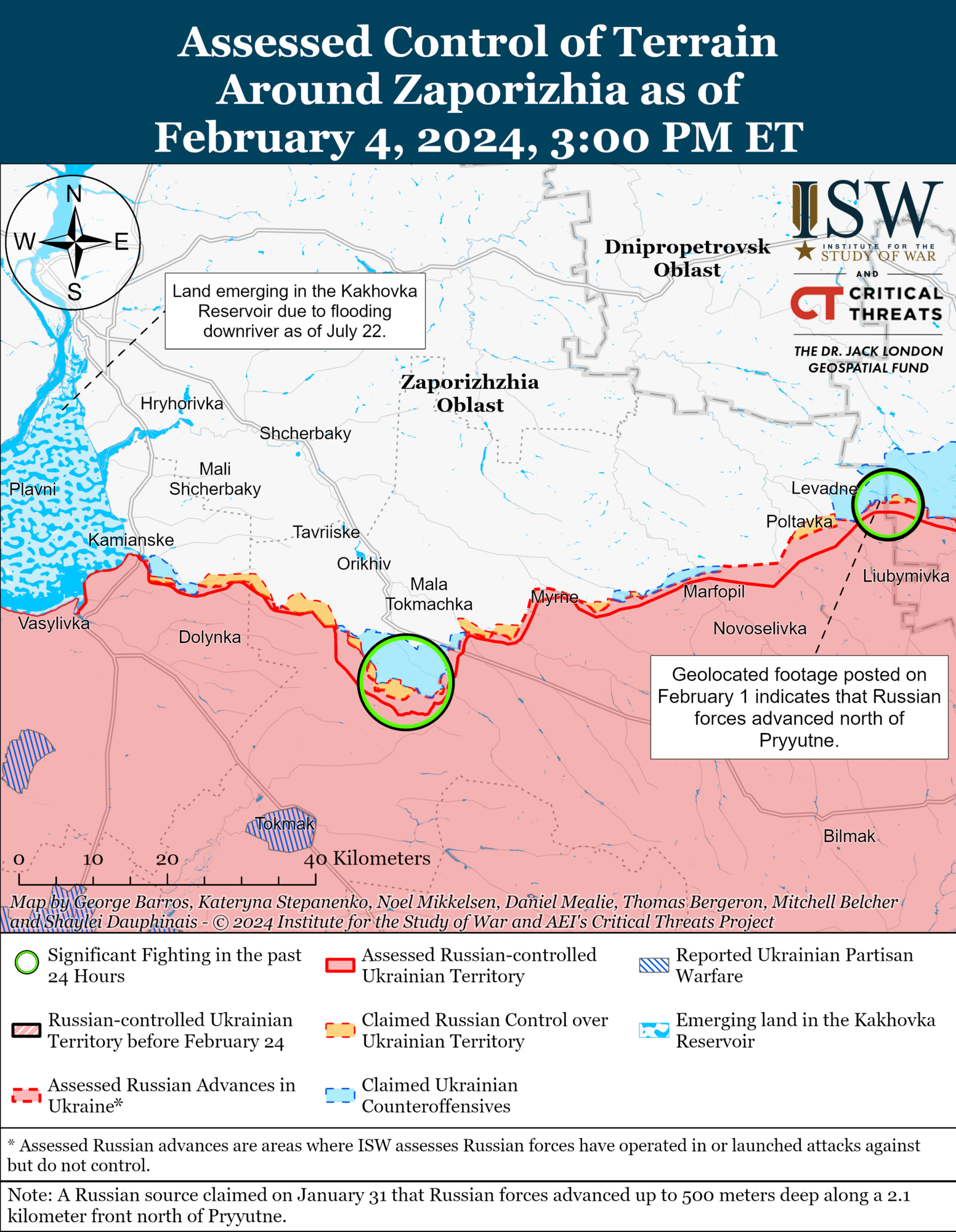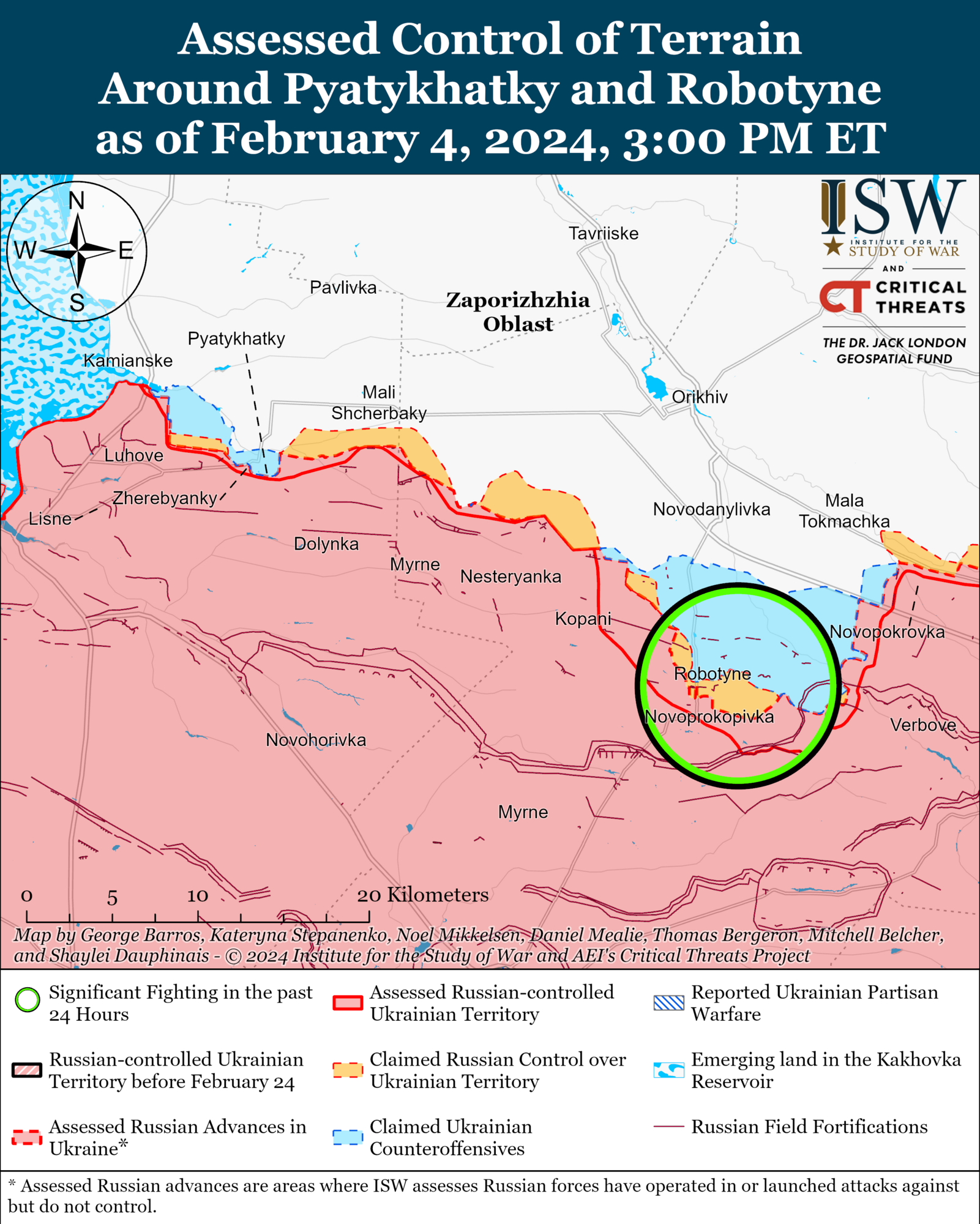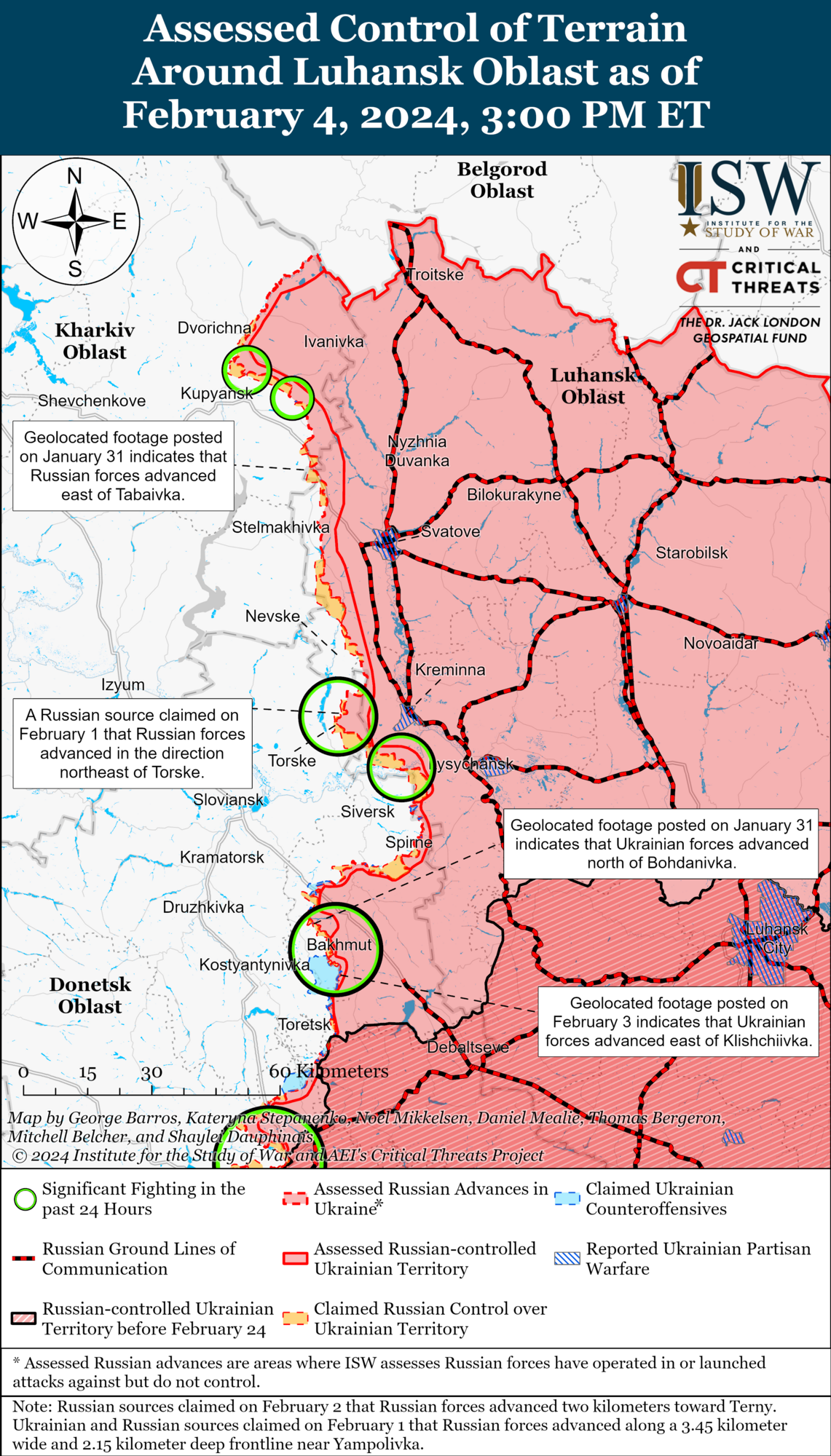War in Ukraine
The ISW assessed what the deployment of reserves in Ukraine will bring to Russia and made a forecast for 2024. Map
The Russian army reserve of about 60,000 concentrated at the front in Ukraine largely corresponds to the aggressor's expected priorities in combat, but does not necessarily indicate its future offensives. However, in 2024, with the help of such a reserve, the Kremlin will be able to determine where, when, and to what extent hostilities will take place if the Armed Forces do not challenge the initiative by switching from defense to attack.
This is stated in a report by the Institute for the Study of War (ISW). At the same time, they believe that the Russian defense industrial base is unlikely to be able to fully support such a manpower reserve, despite its ability to produce military equipment and maintain the current pace of operations.
Ukrainian military observer Kostyantyn Mashovets stated that Russian troops currently have 17 regiments, 16 battalions, and two regimental-battalion-level tactical units in reserve. The total number of personnel of the Russian Armed Forces in the reserve units is about 60,000-62,000, but the Russian forces have equipped only about 20,000 personnel of the tactical and operational-tactical reserve with weapons and equipment.
According to him, the largest number of Russian army reserves is concentrated in the operational area of the Southern Group of Forces, followed by the Western, Dnipro, Zaporizhzhia, Eastern and Central Groups.
The Southern Group of the occupation forces is responsible for the Bakhmut and Avdiivka directions. And Mashovets noted that the concentration of enemy reserves in this area coincides with the areas of concentration of Russian forces in the offensive.
At the same time, it is not surprising that the Russian Dnipro Group, which operates in the temporarily occupied part of Kherson region, ranks third in terms of reserves, given that Russian forces may be concerned about the Ukrainian threat on the left bank.
Ukrainian officials recently said that Russian forces have more than 70,000 troops on the left bank of the Dnipro River in the Kherson and Zaporizhzhia regions, but many are concentrated deeper in the rear. The ISW suggested that the reserves of the Dnipro group of the occupiers could easily move to the Zaporizhzhia direction if circumstances demanded.
Mashovets calculated that the Central Group of Troops, which is responsible for the Liman direction, has the lowest concentration of reserves due to its smaller operational area, which requires fewer troops. Analysts additionally estimate that this is also because Russian operations in this area are most likely intended to support the actions of the Western Group of Forces on the Kupiansk-Svatove line (they are likely to be involved in offensives in the Kharkiv and Luhansk regions).
According to experts, Russian troops will be able to freely move their reserves between different parts of the frontline as long as Russia holds the strategic initiative in the entire theater of operations.
"An active Ukrainian defense on the entire front line in 2024 would cede strategic initiative to the Russian Armed Forces, allowing Moscow to determine where, when, and on what scale fighting occurs and allocate resources accordingly, while forcing the Ukrainian Armed Forces to respond. However, Ukraine could deprive Russia of this opportunity if it were able to challenge this initiative," the ISW concluded.
At the same time, they estimate that the Russian defense industrial base is unlikely to be able to fully support the Russian manpower reserve, despite Russia's ability to maintain the current pace of operations and ongoing efforts to expand its military-industrial base.
Mashovets stated that the operational and strategic reserves of the Russian Armed Forces are generally not combat-ready, but the Russian military-industrial base tends to view their reserve component as a "bottomless barrel." According to him, the Russian defense industry is capable of producing about 250-300 "new and thoroughly modernized" tanks a year. The Russians can also annually repair about 250-300 tanks that are in long-term storage or have been damaged in combat.
The Ukrainian military expert says that the situation is similar to armored combat vehicles, suggesting that the Russian military-industrial base can more or less cover the annual losses of equipment in the war. At the same time, he believes that Russia will not be able to produce enough equipment to equip large reserves if the need suddenly arises.
Analysts also recalled the estimates of Latvian Defense Ministry Secretary of State Jānis Garisons, who said on December 13 that Russia could "produce and repair" about 100-150 tanks per month. And then there is Russian Security Council Deputy Chairman Dmitry Medvedev, who boasted in March that their military-industrial base could produce 1,500 main battle tanks in 2003, which implies an average production of 125 units per month.
But the ISW believes that even with these higher estimates, the Russian military-industrial base is unlikely to be able to support a large-scale mobilization of manpower, and will likely have to expand dramatically to support larger offensive operations that will require the use of more manpower reserves.
"Russia will only be able to expand its military-industrial base and accumulate resources if it retains the initiative in the entire theater of operations throughout 2024, although it is unlikely to provide large masses of mobilized reservists or conscripts this year," the analysts said.
As OBOZ.UA previously reported, Kyrylo Budanov, head of the Main Intelligence Directorate of the Ministry of Defense of Ukraine, believes that the Russian army's offensive will end soon. In his opinion, the invaders' offensive, which began in November 2023, will be completely exhausted early this spring.
Only verified information is available on the OBOZ.UA Telegram channel and Viber. Do not fall for fakes!


